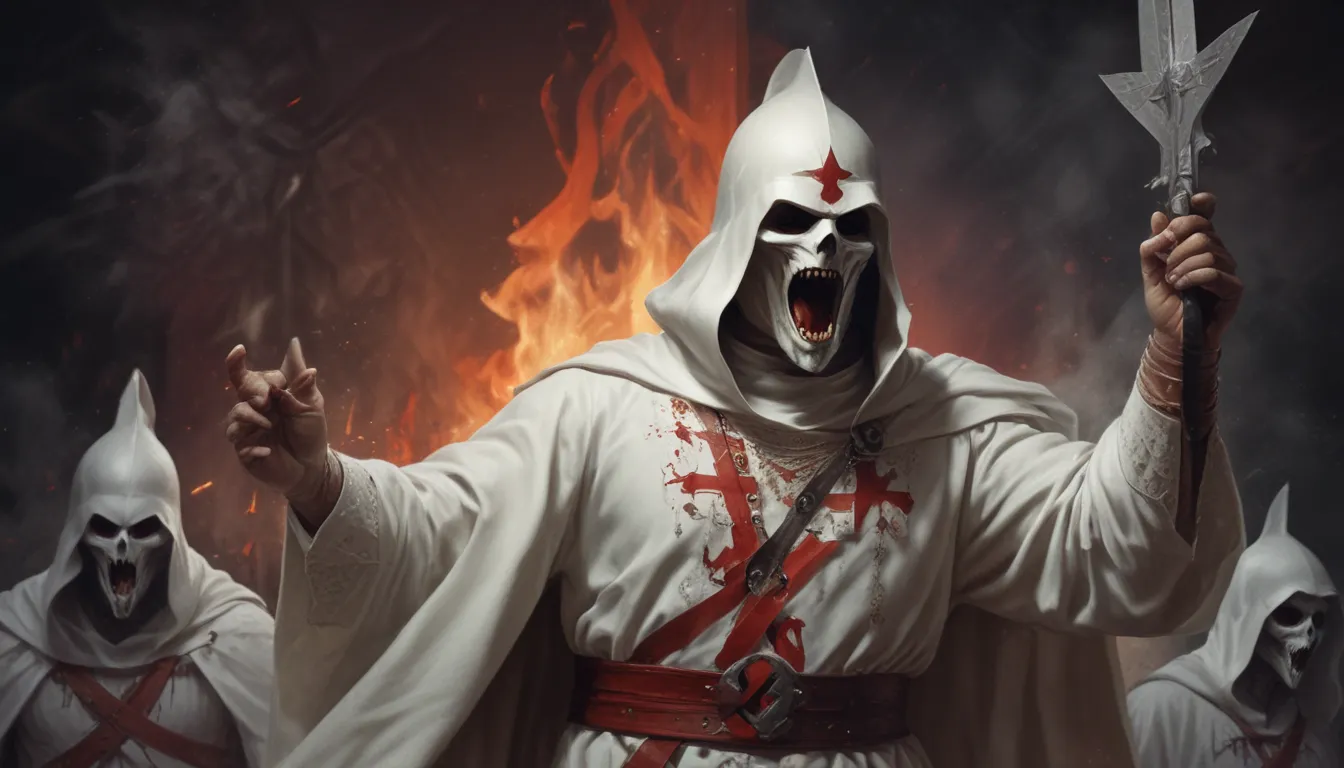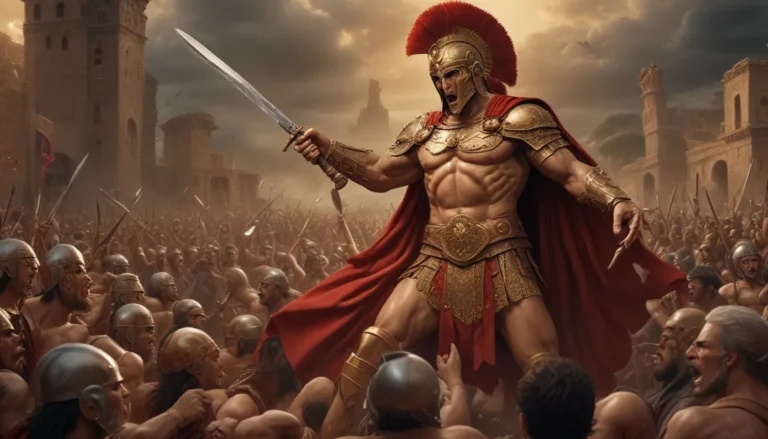The images in our articles may not match the content exactly. They are used to grab your attention, not to show the exact details in the text. The images complement the text but do not replace it.
If you’ve ever been curious about the darker chapters of American history, the Ku Klux Klan (KKK) stands as a chilling reminder of racial hatred and violence. But how well do we truly understand its origins, evolution, and influence on society? In this comprehensive article, we’ll uncover 16 intriguing facts about the KKK that will challenge your existing knowledge. From its post-Civil War beginnings to its lasting impact on modern America, we’ll take you on a journey through time to explore lesser-known details about this notorious organization. Are you ready to expand your understanding of the KKK? Let’s delve into the complexities of this controversial group together.
Key Takeaways
The Ku Klux Klan, established in 1866, aimed to uphold white supremacy through violent and intimidating means, leaving a lasting legacy of hate and intolerance that has had a profound impact on American politics and society. Efforts to combat the KKK involve legislative measures, civil rights activism, and community resilience, with education and dialogue playing crucial roles in dismantling its legacy and fostering a more tolerant society.
Unveiling the Origins of the Ku Klux Klan
The Ku Klux Klan, or KKK, has solidified its position in history as a symbol of fear, division, and hatred. Its roots date back to the turbulent post-Civil War era, specifically to the year 1866. Founded by six Confederate veterans from Pulaski, Tennessee, the organization started as a seemingly innocuous fraternal social club but quickly transformed into something far more sinister.
- The KKK sought to restore white supremacy through intimidation and violence, targeting not only African Americans but also white supporters of Reconstruction and other marginalized groups.
Unraveling the Symbols and Rituals of the KKK
Symbols and rituals play a critical role in shaping the identity and operations of the Ku Klux Klan, acting as tools of intimidation and markers of membership.
-
Members of the KKK are infamous for their white robes and hoods, designed to conceal their identities and instill fear. In the twisted ideology of the Klan, these garments symbolize purity.
-
Cross burnings have become synonymous with the Klan, serving as symbols of intimidation and rallying calls for its members. Despite their horrific implications, these acts are rooted in a misguided interpretation of Christian symbolism.
The Political Influence of the KKK
The impact of the Ku Klux Klan reaches far beyond physical acts of violence and intimidation, extending deep into the realm of American politics.
-
In the 1920s, the KKK experienced a resurgence, expanding its membership to millions across the United States. Members held sway over elections and held positions of power, including elected offices.
-
The Klan’s political strategy involved endorsing candidates who aligned with their racist and nativist beliefs, occasionally running Klan members for office to further their agenda of racial segregation and discrimination.
The Ebb and Flow of the KKK
Despite facing periods of decline, the Ku Klux Klan has proven to be remarkably resilient, resurfacing in various forms throughout American history.
-
During the Civil Rights Movement of the 1950s and 1960s, the Klan experienced a resurgence as it violently opposed desegregation and civil rights advancements. This period underscored the enduring presence of the Klan in American society.
-
Today, fragmented factions of the KKK exist throughout the country, though their numbers have significantly dwindled from their peak. Despite this, they continue to promote their hateful ideologies through propaganda and sporadic acts of violence.
The Global Reach of the KKK
The ideologies and tactics of the Ku Klux Klan transcend national borders, influencing racist and extremist groups around the world.
- White supremacist organizations in other countries have adopted similar tactics of intimidation and violence, drawing inspiration from the methods employed by the KKK. Unfortunately, the Klan’s legacy of hate has resonated in various corners of the globe, contributing to the proliferation of racial intolerance and violence.
Strategies Against the KKK
Efforts to combat the Ku Klux Klan involve a multifaceted approach, encompassing governmental and civil society initiatives.
-
Legislation such as the Civil Rights Act of 1964 and the Voting Rights Act of 1965 played a pivotal role in curtailing the power and influence of the Klan by advocating for racial equality and safeguarding the rights of African Americans.
-
Civil rights organizations and activists relentlessly work to expose the activities of the Klan and counter its messages of hate. Their endeavors are instrumental in educating the public, promoting tolerance, and advocating for victims of racial violence.
-
Community resilience and solidarity have proven effective in opposing the Klan, as united communities have successfully deterred Klan activities and supported those targeted by their hateful actions.
The KKK’s Presence in Popular Culture
The Ku Klux Klan has found its way into various forms of popular culture, reflecting society’s ongoing struggle with its legacy.
-
Films, television shows, books, and other mediums have explored the history and impact of the Klan, occasionally sparking controversy with their portrayals. These depictions range from historical dramas to documentaries, contributing to a deeper understanding of the Klan’s place in American history.
-
Art and music have served as powerful tools for critiquing the Klan, promoting messages of unity and resistance. Artists and musicians have utilized their platforms to denounce the Klan’s ideologies and honor the efforts of those who have opposed them.
Education as a Weapon Against Hate
Education emerges as a vital weapon in combating the ideologies propagated by groups like the Ku Klux Klan.
-
Teaching about the history and impact of the KKK in educational settings fosters a more inclusive and tolerant society. By gaining an understanding of the origins and repercussions of hate, future generations are better equipped to resist and counteract it.
-
Initiatives promoting diversity, equity, and inclusion are essential in cultivating environments where hate has no place. Educational programs that emphasize the value of diversity and the significance of standing against discrimination are crucial in dismantling the harmful legacy of organizations like the KKK.
-
Dialogue and community engagement play a vital role in bridging divides and fostering a society that rejects hate. Open conversations about race, history, and tolerance can bring people together and encourage a collective stance against groups like the Ku Klux Klan.
Reflecting on History’s Shadows
Our journey through the dark corridors of history has shed light on the complex past of the Ku Klux Klan. This exploration not only reveals the Klan’s notorious deeds but also places them within the wider context of racial tensions and the struggle for civil rights in America. Understanding these facts is paramount to recognizing the deep-rooted issues that continue to plague society today. By confronting these truths, we can aspire to create a future where equality and justice are not mere ideals but tangible realities for all. Let the lessons we’ve gleaned guide us in forging a more inclusive and understanding world. Remember, knowledge is power, and it falls upon us to use it judiciously in combatting hatred and bigotry wherever they may lurk.
Frequently Asked Questions
What exactly was the KKK?
Known as the Ku Klux Klan, this group emerged in the United States shortly after the Civil War. Members held extreme racist beliefs, advocating for white supremacy and employing intimidation, violence, and terrorism against groups they opposed, particularly African Americans.
How did the KKK begin?
Initially formed by Confederate veterans in Pulaski, Tennessee, in 1865, the Klan sought to resist Reconstruction efforts and maintain white dominance in the South through fear and violence.
Were there different versions of the KKK?
Yes, indeed. The Klan has experienced three distinct waves. The first began after the Civil War, focusing on opposing Reconstruction. A second wave rose in the 1910s and 1920s, broadening its targets to include immigrants, Catholics, Jews, and others. The third resurgence occurred during the Civil Rights Movement of the 1950s and 1960s, opposing desegregation and civil rights advancements.
What symbols are associated with the KKK?
Iconic for their white robes and hoods intended to anonymize members, the Klan also used the burning cross as a symbol of intimidation and terror.
How did the U.S. government respond to the KKK?
Over the years, federal and state governments have enacted laws to curb the Klan’s activities. Notably, the Ku Klux Klan Act of 1871, also known as the Civil Rights Act of 1871, aimed to protect the civil rights of all citizens and reduce Klan violence.
Is the KKK still active today?
While significantly diminished in numbers and influence, various factions of the Klan still exist across the United States. These groups continue to promote their racist ideologies, though they face widespread condemnation and legal challenges.
How do communities combat the influence of the KKK?
Communities and organizations work tirelessly to counteract the Klan’s message through education, promoting inclusivity, and standing against hate. Legal actions, public condemnations, and community programs aim to dismantle racism and support those targeted by hate groups.
Was this page helpful?
Our commitment to delivering trustworthy and engaging content is at the heart of what we do. Each fact on our site is contributed by real users like you, bringing a wealth of diverse insights and information. To ensure the highest standards of accuracy and reliability, our dedicated editors meticulously review each submission. This process guarantees that the facts we share are not only fascinating but also credible. Trust in our commitment to quality and authenticity as you explore and learn with us.






